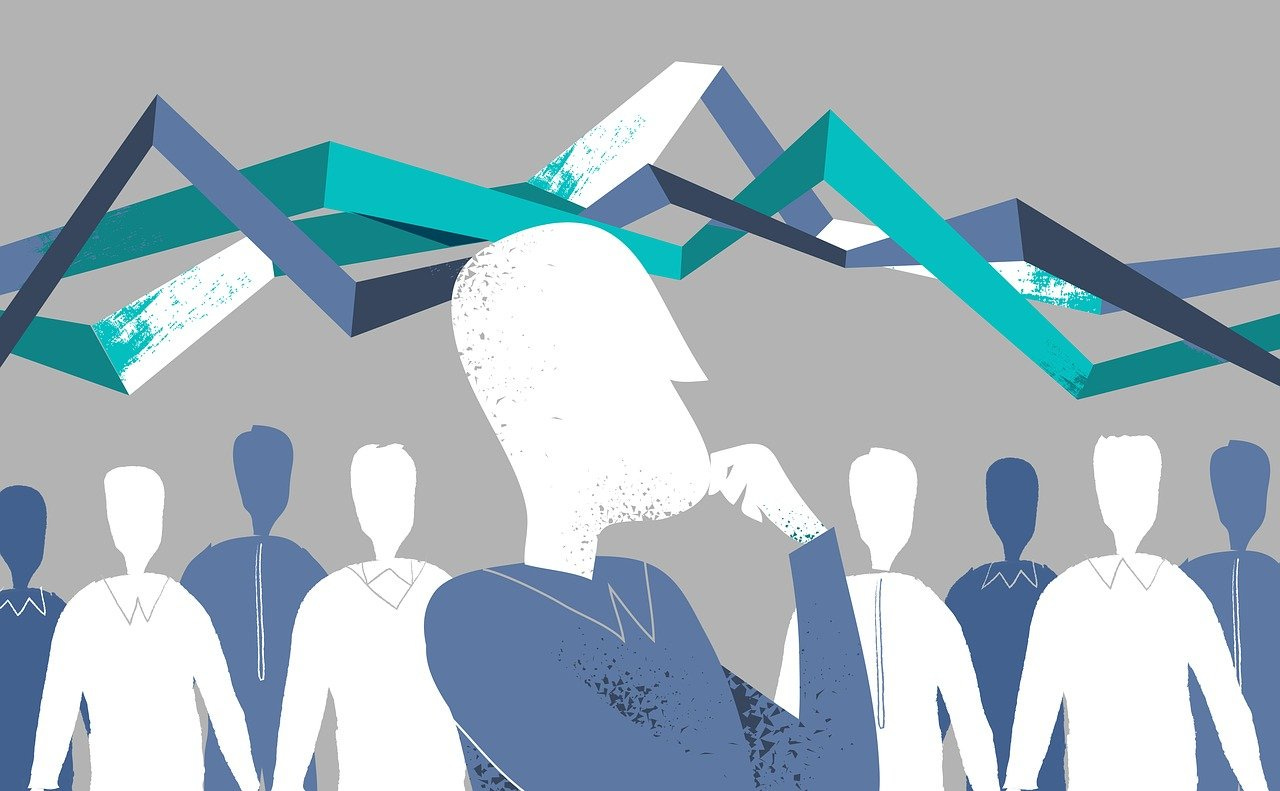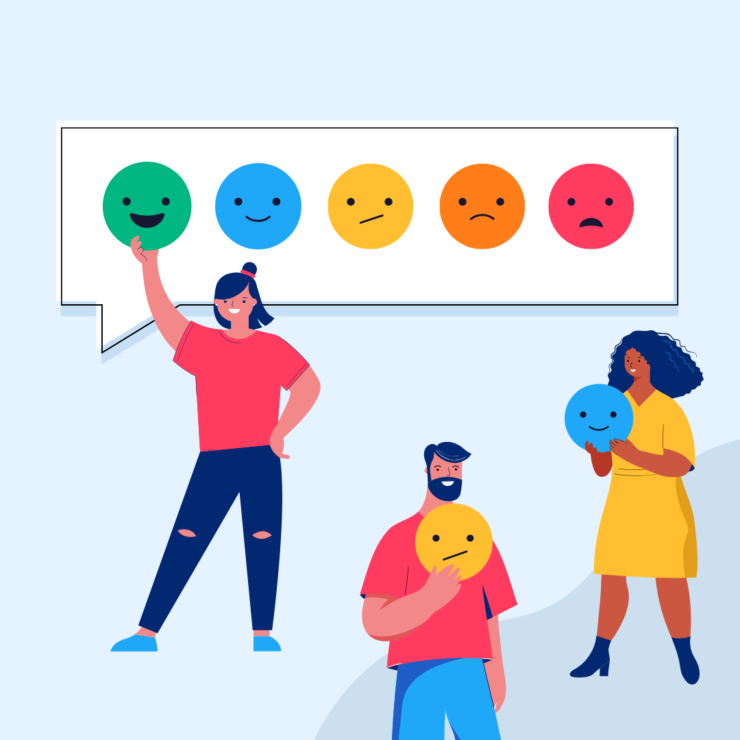The past three years, marked by a considerably dynamic environment, have had a transformative impact on both the business world and daily life practices. Describing this impact falls short when considering the point at which the age of software has arrived. From the early days of the COVID-19 pandemic to the point where economic uncertainty became global, companies worldwide had to make radical changes in their operations. These changes, directly affecting end-users or customers, created a tremendous upheaval in the customer service sector.
On the other hand, it is crucial to acknowledge that 2023 brings forth new perspectives, signaling that it is high time for companies to assess their situation and take action without delay.
First and foremost, it is essential for companies to act while keeping in mind the reality that control now lies entirely in the hands of the customer. In essence, this implies that customers expect the companies from which they purchase products and services to gradually understand them. The expectation for speed and flexibility, characteristic of the postmodern society of the age of artificial intelligence and software, essentially converges on one common ground: an immersive customer experience.
So, what does the year hold for the customer service sector amid the changing and expected to continue changing parameters? To find answers to your questions, it is beneficial to examine the customer trends around the immersive customer experience shaping the evolving landscape of 2023.
At the forefront of everything is the immersive customer experience.
Immersive customer experience (immersive CX) stems from a new phenomenon that customers demand: natural and seamless interaction. In 2023, this phenomenon will shape the overall framework of customer trends, serving as the greatest evidence that customers want to be seen and heard, not treated as mere transactions. At the core of natural and seamless interaction are chatbots closely mimicking real humans and speech experiences that allow customers to transition across channels, sustaining interaction.
According to a survey conducted by Zendesk, 81% of leaders from participating companies see creating an immersive customer experience as a priority for 2023.
Given this context, the same study has identified five key trends that will stand out in 2023 concerning immersive customer experience. Would you like to briefly list these five key trends that are crucial for structuring your company’s customer relationships in a natural and interactive manner, and then delve deeper into them?
· Artificial intelligence experiences become more advanced and seamless.
· Speech experiences empower consumers.
· Customers are willing to go deeper for more personalization.
· Consumer well-being and sensitivity reshape CX.
· As CX teams become more integrated, data silos are dismantled.
A New Era in Artificial Intelligence (AI) Experiences
While there is still time for artificial intelligence to pass the Turing test, the developments of the past year seem to be a harbinger of what will happen in 2023!
According to Zendesk’s survey, 59% of leaders from participating companies state that they have achieved measurable and goal-aligned returns on investment through their investments in artificial intelligence. Moreover, 65% of these leaders believe that AI applications like chatbots have become much more natural and human-like. This is further confirmed by ChatGPT’s agenda for 2023 in the realm of AI.
On the consumer side, 72% express that interacting with customer service bots has visibly improved transaction and service quality. Additionally, 69% of customers seeking support ask more comprehensive questions to bots, while 78% still feel the need to connect with a human representative despite everything.
This study, conducted on companies and consumers, provides important insights into the customer trends of 2023, indicating that customers want to leverage AI more. Accordingly, 73% of customers wish to communicate more with AI in their daily lives, and 74% believe that AI will enhance the efficiency of customer services. Furthermore, 75% argue that AI should provide service at the same level as human customer representatives and predict that AI will become more natural and human-like over time.
Among the consumers participating in the survey, 43% believe that voice-based AI tools will change the way they shop from brands. When asked how this might change in the next 10 years, 48% of consumers are quite certain that voice-based AI will change the ways customer service is provided. However, leaders are not as optimistic.
62% of leaders admit they are lagging in the use of AI, and 60% state that their plans are not strategic but rather temporary. Additionally, 59% of leaders emphasize the difficulty of taking AI-supported immersive CX actions when company pain points such as data silos combine with tool and expert shortages.
Nevertheless, 72% of these leaders express that using AI to enhance customer experience will be one of their main goals in 2023.
The Rise of Dialogue Experiences
As indicated by the first customer trend of 2023, immersive customer experience is directly related to your customer’s comfort zone. Given this, it is not surprising that the second trend of the year is the rise of dialogue experiences.
The concept of a dialogue experience, based on fluent and uninterrupted service, signifies a process where the customer is in the driver’s seat. Placing the customer in the driver’s seat involves taking the conversation to different channels, ensuring support that does not interrupt customers’ ongoing tasks, and engaging with various representatives. It is evident that this will enable you to build stronger relationships with customers.
Everything starts with one of the fundamental elements of good customer service: Instant assistance. These assists should feel natural, genuine, and personal. As these conversations progress, consumers expect everyone they interact with in the company to have knowledge about their purchase history, previous interactions, etc. On the other hand, consumers have begun to overlook the distinction between physical and digital experiences. This will make the situation a bit challenging for companies operating both physical and online portals.
The expectations of customers participating in Zendesk’s research regarding dialogue experiences are as follows:
· Instant Service – 72%
· Natural and Dialogue-Based Experience – 71%
· Customer Service Representative’s Understanding of Content and Issue – 70%
· Seamlessness of Customer Experience between Digital and Physical Spaces – 62%
When you consider that dialogue experience is directly related to problem-solving, the following result may not surprise you: 64% of customers do not hesitate to spend more if their issues are resolved in the area where they conduct transactions.
Indeed, 75% of leaders from participating companies in the study state that their goal in 2023 is to make customer service more dialogue-based.
Deeper Personalization
As the development of artificial intelligence in customer service and the era of providing dialogue-based experiences call, consumers are also directing this third pillar of immersive CX. Their expectations can be distilled into a simple concept: they want companies to use the vast amount of data they possess to provide experiences that go beyond typical marketing efforts and truly personalized ones. Taking a closer look at what this means can be beneficial.
The point illuminated by Zendesk’s research is this: Most companies have a rather narrow perspective on what personalization and its extensions mean. This contradicts with 62% of consumers who believe that these businesses could do more. These consumers desire to be part of experiences where they are not lumped into a demographic bucket, evaluated in a single segment, but treated as individuals.
59% of participating consumers in the study emphasize that companies should use the data they collect about them to personalize their experiences.
While 62% of consumers agree that personalized recommendations are better than general recommendations, 60% express that they can understand and value personalized recommendations when they receive them.
As acknowledged by 77% of company leaders, deeper personalization increases customer retention rates. Moreover, 66% of leaders believe that it reduces acquisition costs. These are significant factors that cannot be overlooked.
In addition to all this, leaders want to merge customer service data with other data types for company-wide use. 82% of leaders hope to combine service data with customer feedback data, 79% with product data, 78% with sales data, and 77% with marketing data.
Consumer Well-being and Sensitivity
Surely, you must have experienced at least one customer service encounter that could be described as nothing short of frustrating. A negative customer service experience with a company can lead to real and lasting emotional damage.
In the study, 56% of consumers who participated characterize their customer service experiences from the past year as positive, while 25% consider them neutral, and 19% label them as negative. Additionally, 66% of customers in the sample group say that a bad customer service experience can ruin their days, and 60% state that their purchasing behavior changes based on the customer service experience they receive.
There is also the side of customer representatives in the matter of consumer well-being. Let’s listen to what they have to say:
· 58% of representatives state that the lack of consumer data generally leads to a negative experience for customers.
· 37% of representatives say they are often noticeably angry, upset, or stressed when a customer cannot complete simple tasks on their own.
· 29% of representatives point to a lack of basic online information, stating that it angers customers.
Based on this data, it is evident that the ways to both capture and understand consumer emotions need to be formalized. Taking this step will create new opportunities to adapt the customer experience, aiming to prevent and improve the disappointment that many consumers struggle with.
Customer Experience Teams Becoming More Integrated
Business leaders have long seen customer service organizations not as revenue-generating entities but as cost centers. This mindset has created siloed teams lacking customer data, hindering efforts to deliver exceptional (or even satisfactory) experiences.
However, as business leaders are beginning to discover, there is an expectation from customers for data to be widely shared to personalize and enhance their experiences. Indeed, this insight reveals another significant customer trend in 2023: Service can be a significant revenue factor.
While it may take some time for service to become a significant revenue factor, this awareness has created a focal point: Customer service must break down silos by achieving true integration between sales, service, and marketing. Doing so promises increased efficiency, improved customer experience, and ultimately, more revenue.
On the other hand, looking at the current conditions, you are faced with a scenario where 78% of business leaders believe that their teams are not sharing data effectively.
FowCRM: Creating an Immersive Customer Experience
Capture all of the customer trends for 2023 with our next-generation sales automation product, FowCRM. With FowCRM, which allows you to process big data and create intelligent reports, you can achieve deeper personalization and integrate your customer experience teams with features that facilitate teamwork. FowCRM, providing the advantage of practical documentation, allows you to classify customer data accurately, enhancing consumer well-being. Moreover, with an AI and software science-supported system, you can elevate the dialogue experience by allowing your customers to be in the driver’s seat. In summary, FowCRM is tailor-made to enhance the customer experience.
After reviewing the data in this document, if you wish to explore the primary source of the research, you can access Zendesk‘s comprehensive 2023 Customer Trends research by clicking on this link, where you can examine the full report.




